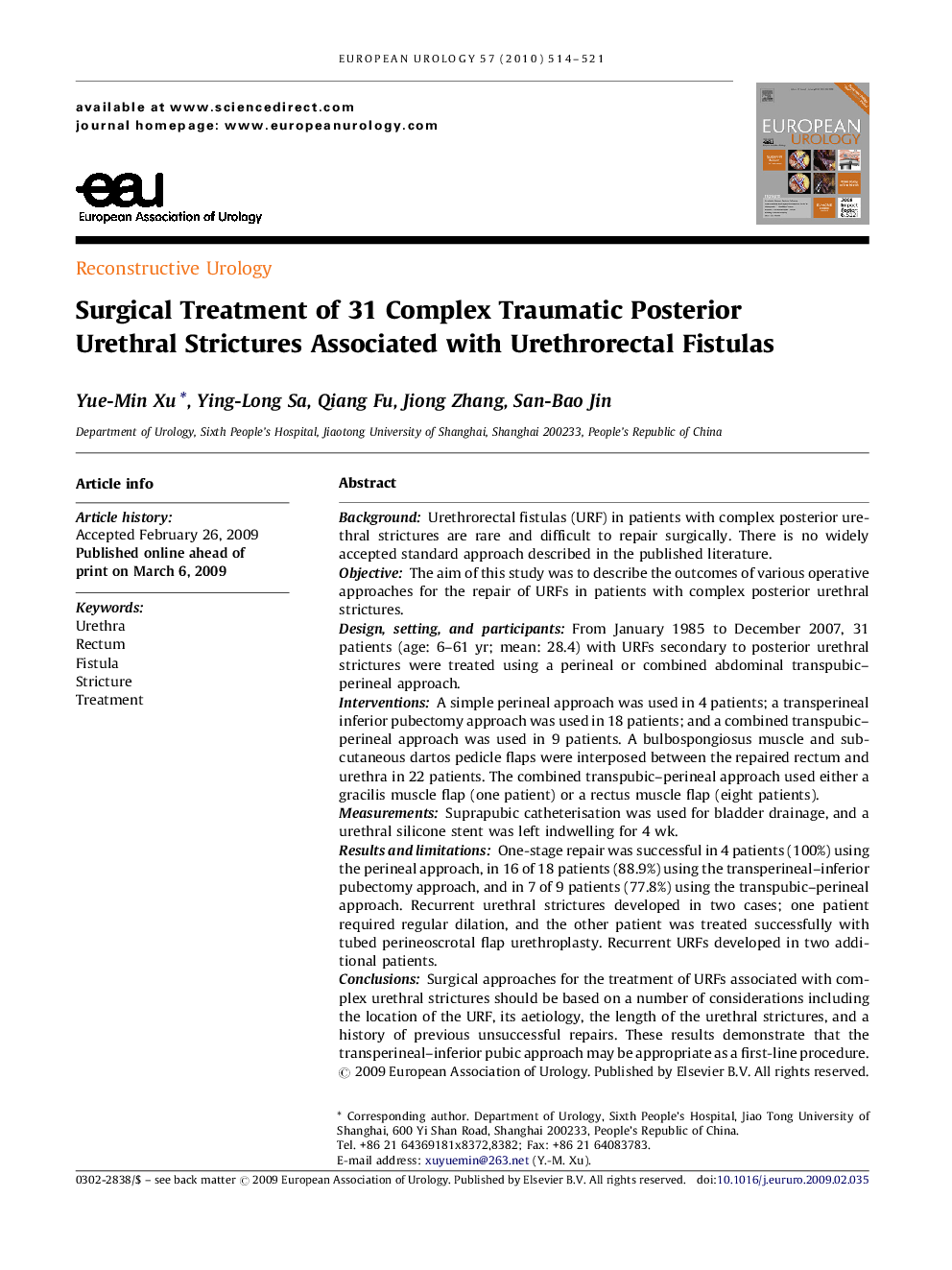| کد مقاله | کد نشریه | سال انتشار | مقاله انگلیسی | نسخه تمام متن |
|---|---|---|---|---|
| 3927004 | 1253160 | 2010 | 8 صفحه PDF | دانلود رایگان |

BackgroundUrethrorectal fistulas (URF) in patients with complex posterior urethral strictures are rare and difficult to repair surgically. There is no widely accepted standard approach described in the published literature.ObjectiveThe aim of this study was to describe the outcomes of various operative approaches for the repair of URFs in patients with complex posterior urethral strictures.Design, setting, and participantsFrom January 1985 to December 2007, 31 patients (age: 6–61 yr; mean: 28.4) with URFs secondary to posterior urethral strictures were treated using a perineal or combined abdominal transpubic–perineal approach.InterventionsA simple perineal approach was used in 4 patients; a transperineal inferior pubectomy approach was used in 18 patients; and a combined transpubic–perineal approach was used in 9 patients. A bulbospongiosus muscle and subcutaneous dartos pedicle flaps were interposed between the repaired rectum and urethra in 22 patients. The combined transpubic–perineal approach used either a gracilis muscle flap (one patient) or a rectus muscle flap (eight patients).MeasurementsSuprapubic catheterisation was used for bladder drainage, and a urethral silicone stent was left indwelling for 4 wk.Results and limitationsOne-stage repair was successful in 4 patients (100%) using the perineal approach, in 16 of 18 patients (88.9%) using the transperineal–inferior pubectomy approach, and in 7 of 9 patients (77.8%) using the transpubic–perineal approach. Recurrent urethral strictures developed in two cases; one patient required regular dilation, and the other patient was treated successfully with tubed perineoscrotal flap urethroplasty. Recurrent URFs developed in two additional patients.ConclusionsSurgical approaches for the treatment of URFs associated with complex urethral strictures should be based on a number of considerations including the location of the URF, its aetiology, the length of the urethral strictures, and a history of previous unsuccessful repairs. These results demonstrate that the transperineal–inferior pubic approach may be appropriate as a first-line procedure.
Journal: European Urology - Volume 57, Issue 3, March 2010, Pages 514–521